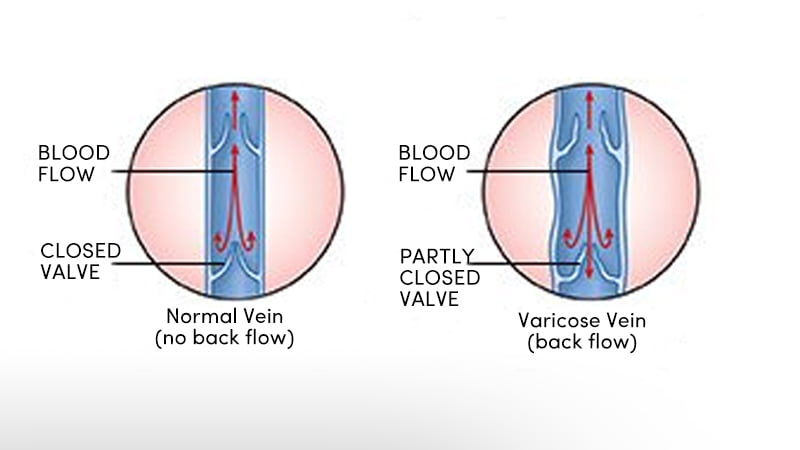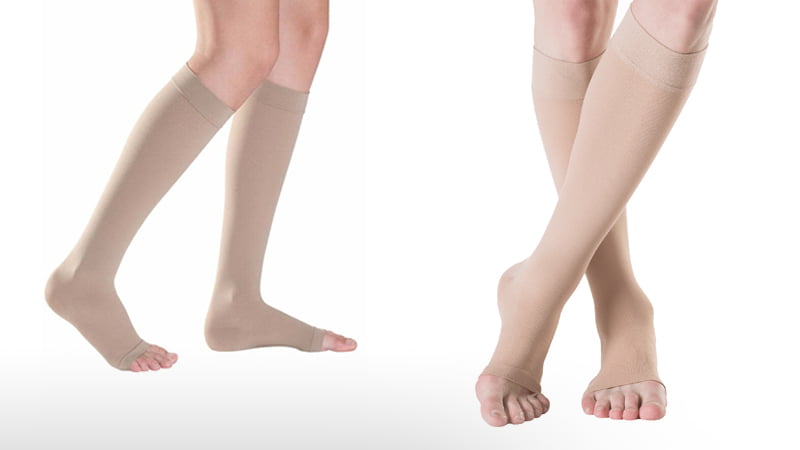The discussion on “spider veins vs varicose veins” is a common one. As it is quite apparent in the names, both these conditions affect our veins. However, most of us are completely unaware of any other similarities and differences between these two ailments!
So, let’s talk about the causes, appearance and symptoms of varicose veins and spider veins to better understand how these two conditions are related.
Spider Veins vs Varicose Veins
Spider veins and varicose veins have a common cause, but the main difference is in appearance and severity. To put it simply, spider veins are the less severe version of varicose veins.
Both spider veins and varicose veins occur when the veins in our body are not functioning efficiently. Both these conditions are more likely to develop in the legs. This is because the veins in our lower limbs work against gravity to push blood up back to the heart and are therefore required to work much harder.

Spider Veins
Spider Veins are clusters of tiny and thin veins that are reddish-blue in colour. They look like tree branches or spider webs and appear close to the surface of the skin.
Spider veins are generally considered a cosmetic condition as it usually does not cause any pain or discomfort. It is most common to see spider veins around the ankles and the back of the calf than any other part of the body
Varicose Veins
Varicose veins are swollen and twisted veins that bulge out from the surface of your skin. This happens because the veins are unable to work correctly, causing the blood to ‘pool’ in the legs and feet. The veins undergo exertion to keep the blood circulation in control while pushing against gravity.
Difference between spider veins and varicose veins
- The easiest way to tell spider veins and varicose veins apart is by their appearance. Spider veins are web-like patterns formed by minute veins that are usually less than 1 mm in diameter. Varicose veins bulge out from beneath the skin and are bigger and swollen blood vessels.
- The symptoms of spider veins and varicose veins are also different. Spider veins on legs are almost painless. It does not cause leg swelling and generally does not lead to other health complications. Varicose veins can cause moderate to acute pain, heaviness and swelling depending on their severity.
- Spider veins treatment is generally considered cosmetic and is optional. However, treatment is necessary to prevent varicose veins from getting worse. You can also wear varicose veins stockings commonly known as compression socks that provide support to the veins and stimulate blood circulation in the legs.
- Some people can have both varicose veins and spider veins, but it’s important to understand that spider veins do not always turn varicose.

Similarities between spider veins and varicose veins
Both spider veins and varicose veins are very common. More than 60% of the world’s population suffers from some form of vein issue.
Spider veins and varicose veins are both types of venous insufficiency. This means that the veins are not able to function correctly and are unable to effectively push the blood back up towards the heart.
Both these conditions also have the same root cause. Below are some of the reasons why someone may develop these conditions:
- Hereditary: If you have family members that either have spider veins or varicose veins, it’s common for you to develop them as well.
- Obesity: This is one of the common reasons why one may develop either of the vein issues. Weight management can help prevent it from occurring.
- Gender-related: Women are more likely to develop spider veins or varicose veins than men.
- Age: As you grow old, the vein walls weaken over time and lose their elasticity. This increases the risk of developing varicose and spider veins.
- Job-related: if your job involves sitting or standing all day, then it may increase the risk of developing these conditions. Make sure that you take a break from sitting or standing and move around a little bit to ensure a smooth blood flow.
Now that we better understand the similarities and differences between spider veins and varicose veins, we must take appropriate precautions to prevent these venous complications. Wearing compression stockings is an easy and effective way to prevent these issues. In case you have already developed spider veins or varicose veins, compression stockings can help by reducing any pain or swelling and slowing down the progression of the ailment.
Frequently asked questions
Are spider veins the same as varicose veins?
Varicose veins are large, swollen blood vessels and usually bulge out of the skin that twists and turns. They mostly develop on the legs and can be seen through the skin. Spider veins are comparatively much smaller, red and blue blood vessels.
Can spider veins turn into varicose veins?
If you develop varicose veins after spider veins, then that’s just a progressive venous disease or genetic tendency. Spider veins do not always turn into varicose veins.
How can I stop spider veins on my legs?
- Increase physical activities
- Avoid sitting or standing for long hours
- Wear compression stockings
- Lose weight
What happens if varicose veins are left untreated?
If varicose veins are left untreated, they can lead to serious health complications that include rashes, infections, bleeding, sores, and blood clots.


Comments
There are no comments yet.